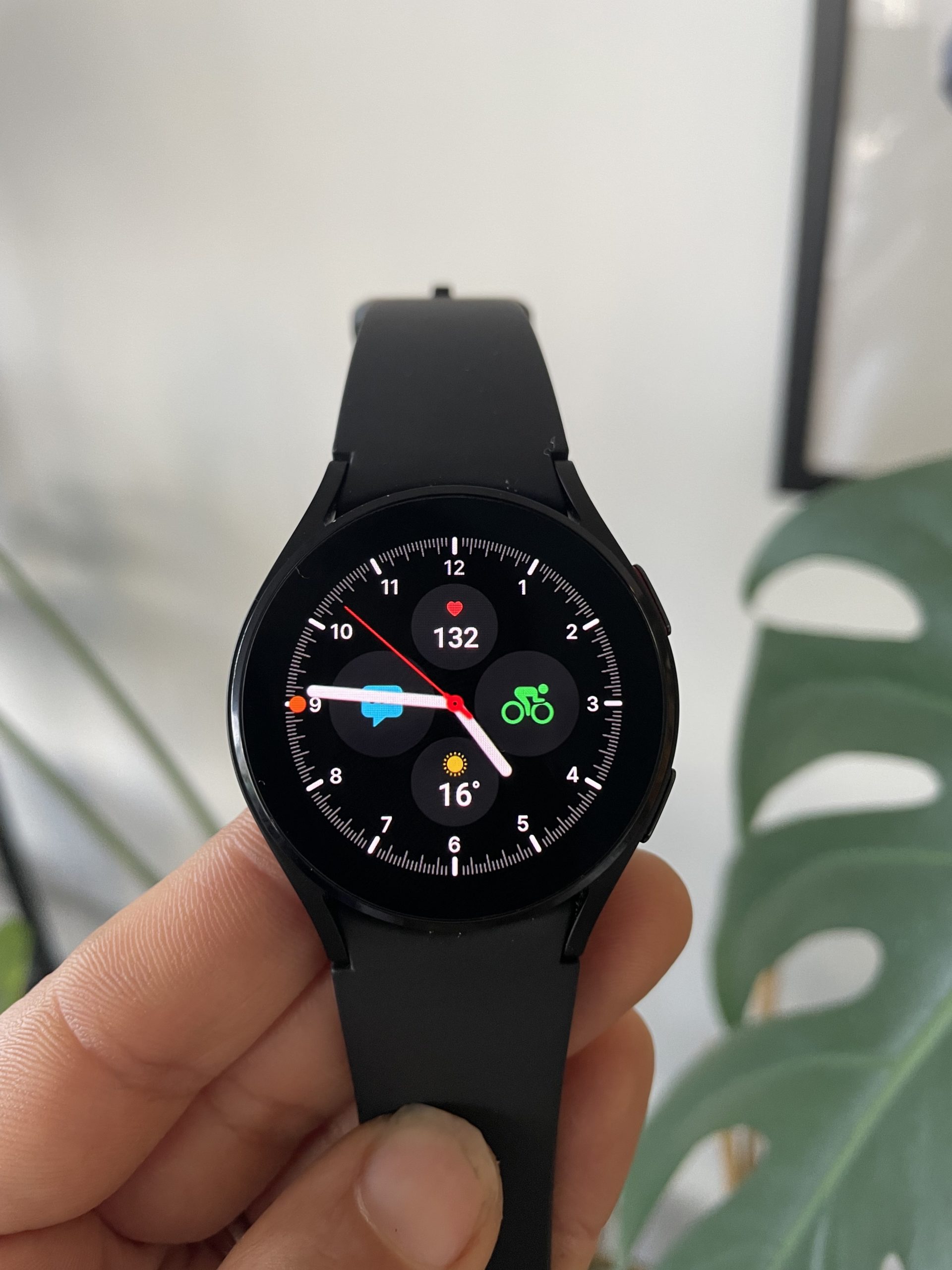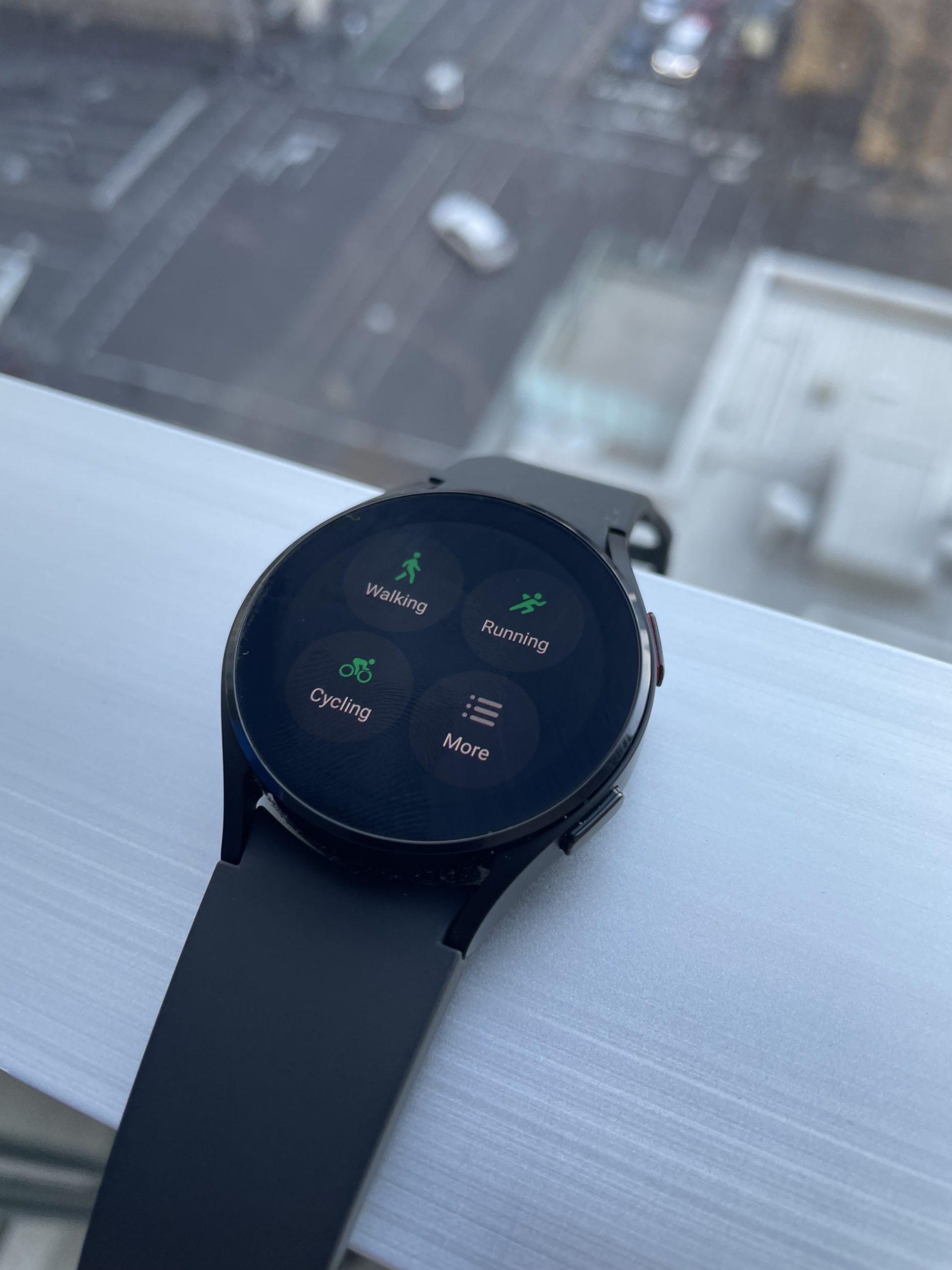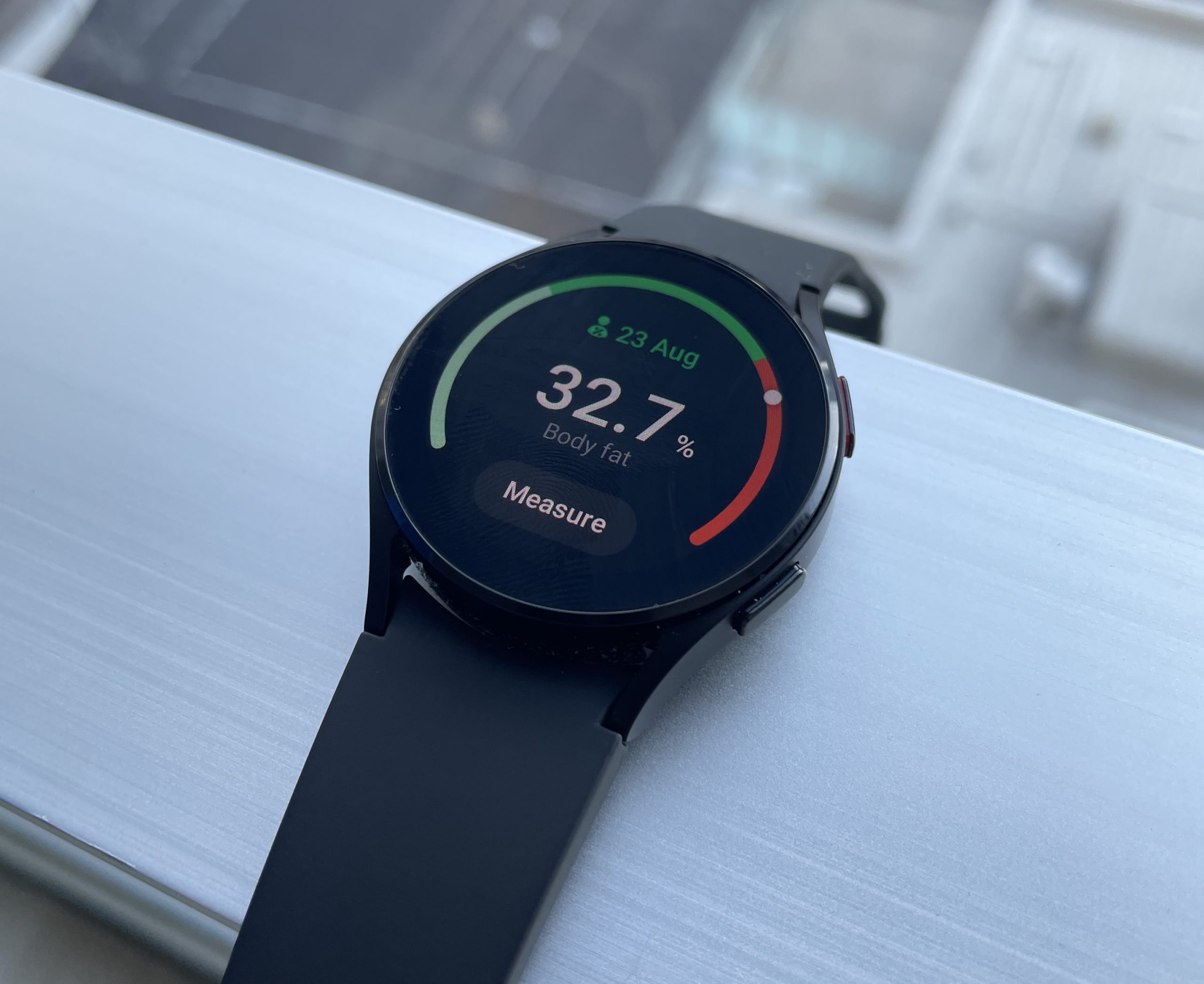With new premium phones come new premium smartwatches. The latest Android smartwatch is the Samsung Galaxy Watch4, designed to complement the Z Fold3 and the Galaxy S21, but it is compatible with Android smartphones across the board.
The big change this year is the move away from the Tizen operating system over to the Google Wear OS. But, bizarrely, instead of opening the watch to even more compatibility with other Android phones, all the good health features are locked to Samsung phones. Worse still, there’s no Google Assistant. It’s a case of multiple leaps forward and a couple of small steps back.
I’ve spent a few weeks with the Samsung Galaxy Watch4, and here are my thoughts.
Samsung Galaxy Watch4 screen and aesthetics

A smart watch is the most personal piece of technology you can wear in polite company, so how it looks matters. I got the 40mm watch with a simple black silicone band, and I think it looks fantastic. It goes with any outfit, and the round face means it looks more like a regular watch, should we ever get the chance to wear formalwear again.
I normally wear a 44mm smartwatch, but didn’t notice that this one was only 40mm until I looked at the back of the box after my first day of wear. That’s great, because it meant even the smaller model presented a lot of information in a way that didn’t seem cramped, but it might not suit those with smaller wrists.
If the band isn’t your jam, it’s easy to change. While the silicone looks nice, it’s a bit of a bastard to sweat in.
The Super AMOLED display looks fantastic. It’s full of vibrant colours, is really easy to read and makes the most of the many different, fun, animated watch faces available. The bright display was perfect for getting easy directions at a glance.
My only issue with the screen is that it’s not the most responsive touch screen I’ve ever used. I felt that I had to be more deliberate with my movements than I’m used to, which was inconvenient at times. It’s likely a learning curve, and long-term users will adjust, but coming from an Apple Watch, it got a bit frustrating.
The rotating bezel is back on some models, which is good news, as that was the best part of previous Samsung watches and an innovative mode of input. It’s only on the Watch4 Classic, and not the vanilla Watch4, because the vanilla is a bit sporty and thus prizes being light-weight over the bezel, so you have the option either way.
Samsung Galaxy Watch4 health and fitness

This watch is chock full of more health and fitness features than I’ve seen in something other than a specialised health and fitness watch.
The ECG, blood pressure and blood oxygen features aren’t going to be turned on until closer to the September 10 launch, so I couldn’t test those. But the body composition feature was really easy to use. While I have no way of knowing if it was accurate, it did match up with what my Withings scale says, which is both depressing (on a personal level) and impressive (for a watch).
That said, I really don’t love the idea of body composition features being made more portable. I know exactly how much harm they could do to someone who has an eating disorder or is going overboard on weight loss. I know that they’re generally inaccurate and don’t give a whole picture of how that weight distribution matters. The red lines don’t provide a positive experience for those who aren’t in the ideal weight range, and encourages getting the fat percentage as low as possible, health be damned. I also know that the ideas of “good” and “bad” on these things are generally based around white bodies and don’t take other body types into account.

What I don’t know is how having body composition on a watch is a good idea. Who is this helping? I don’t have the answer to that.
Those fancier health features will only work if you have a Samsung phone, though, as they run through the Samsung Health app. After keeping their watches open to all phone owners, including those with iPhones for the first few generations, this is an interesting tactic, especially in the year when Samsung opened these watches to the Google ecosystem by using Wear OS instead of Tizen.
If you’re sporty, the watch features a wide range of sports and activities it can measure. But the first thing you should do before starting your first workout is turn off autopause.
On dedicated fitness watches, autopause is a fantastic feature that means the time you spend waiting at the lights isn’t counted against your workout.
The Samsung Galaxy Watch4 is really on top of the pausing function – if you haven’t cycled away within roughly 10 seconds of pressing start on a workout, it will pause. The only problem is that it hasn’t mastered the unpausing, which is really the key aspect of the feature. This is noticeable if you’re periodically checking your time, but if you’re using the watch for directions during your workout, you might end up like me and record nothing for your entire 25km bike ride. Yes, I am still bitter about that.
Once autopause is off, though, the workout recording is great. I found the distances to be accurate, and the voice telling me how I was going encouraging. I just wish that I could raise my wrist to see the measurements automatically rather than having to press a button to banish the clock.
The day-to-day on Samsung Galaxy Watch4

The Samsung Galaxy Watch4 is a leap forward in terms of usability compared to the old Tizen watches. Google integration makes some things, like directions, much easier. Say what you will about Google, but they’re very good at displaying information in a way that’s easy to understand.
While it runs on Wear OS, the interface will be very familiar to anyone who’s used a Samsung smartwatch before thanks to the Tizen overlay. It’ll just run better and also support the Google Play Store, so everyone wins.
Unfortunately, there’s still no sign of Google Assistant, so we’re left to depend on Bixby. Sadly, while Bixby isn’t as bad as the jokes suggest, it still isn’t great.
I was pretty happy with the roughly two-day battery life. On a day when I recorded a 55km cycling workout, it still didn’t need to be charged until the next day, continuing long after my Apple Watch needed charging. Longer is always better, especially in a device that tracks sleep. But given the choice between a bright, pretty screen that does a lot of stuff but needs to be charged more frequently, and a watch with fewer features that rarely needs to be charged, I’m picking the bright pretty one that does stuff.
Conclusion
It’s not perfect; there are certainly still bugs to be ironed out on this first dalliance between Samsung and Google Wear OS. That said, this is basically the best watch you can get if you have a Samsung Galaxy phone.
If you have a different model of Android phone, you might be better off waiting for the next Google Wear OS watch that extends all the flagship functions to your brand of phone.
But if you’re buying a Galaxy Z Fold3 or Z Flip3, or have been thinking about getting a watch for your Samsung phone for a while and don’t want to wait until next year, the Samsung Galaxy Watch4 in either Classic or Regular is the way to go.
